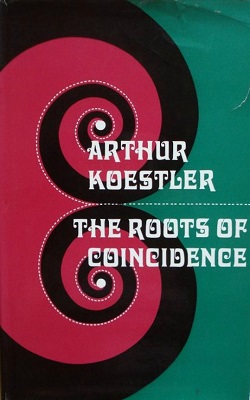 First UK edition (1972, Hutchinson) | |
| Author | Arthur Koestler |
|---|---|
| Language | English |
| Subject | Parapsychology |
| Published | 1972 |
| Media type | |
| ISBN | 0091102804 |
The Roots of Coincidence is a 1972 book by Arthur Koestler. It is an introduction to theories of parapsychology, including extrasensory perception and psychokinesis. Koestler postulates links between modern physics, their interaction with time and paranormal phenomena. It is influenced by Carl Jung's concept of synchronicity and the seriality of Paul Kammerer. [1]
Contents
In the book Koestler argues that science needs to take the possibility of the occurrence of phenomena that are outside our common sense view of the world more seriously and study them. [2] [3] He concludes that paranormal events are rare, unpredictable and capricious and need a paradoxical combination of skillful scientific experiment with a childlike excitement to be seen and recorded.
The psychologist David Marks initially was critical of Koestler's book for endorsing pseudoscience. Marks noted that Koestler uncritically accepted ESP experiments and ignored evidence that did not fit his hypothesis. In The Psychology of the Psychic Marks coined the term "Koestler's Fallacy" as the assumption that odd matches of random events cannot arise by chance. Marks illustrates the fact that such odd matches do regularly occur with examples from his own experience. [1] In "Psychology and the Paranormal: Exploring Anomalous Experience" Marks (2020) modifies his position by suggesting that a few coincidences are so extremely improbable that they warrant more serious scientific attention. Subjective anomalous experiences defy scientific explanation precisely because they are so improbable (e.g. a coincidence with an estimated probability of ten to the minus 18) and they never can be consciously controlled. Traditional statistical hypothesis testing using the .05 level obviously cannot be applied suggesting a double standard. John Beloff gave the book a mixed review, describing it as "a typical Koestlerian performance" but noting that some of his claims about psychical research were inaccurate. [4]